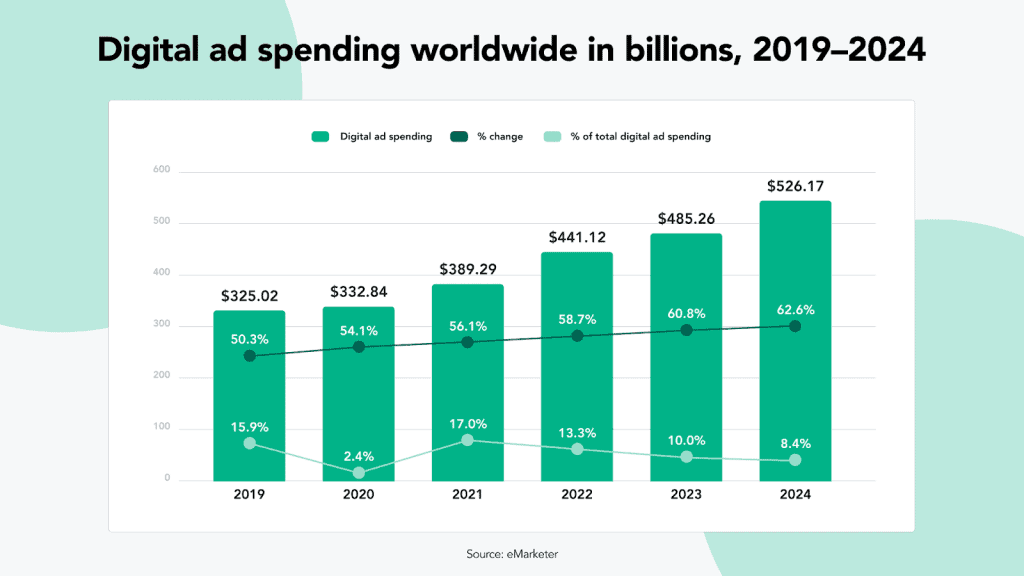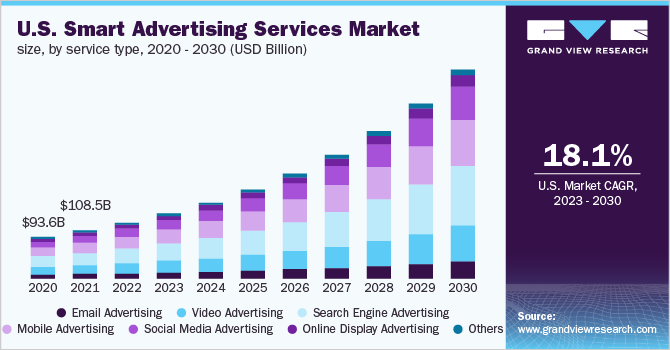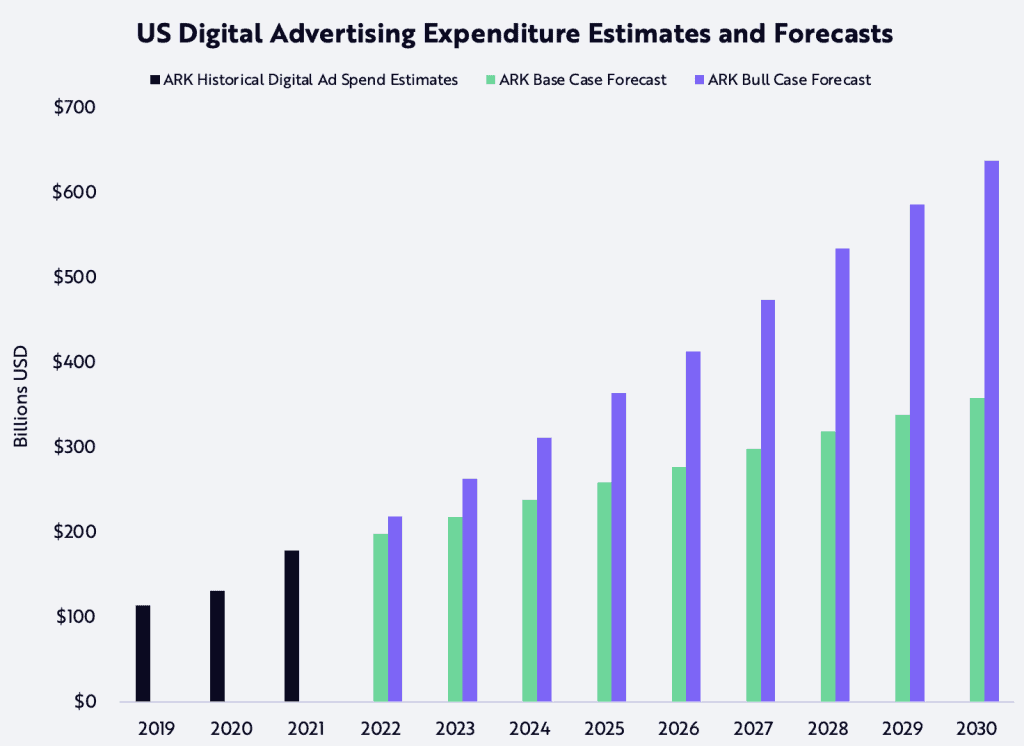Understanding the prevalence of digital ads
Digital ads have become an ubiquitous part of our online experience, popping up on websites, social media platforms, and even mobile apps. But have you ever wondered what the most common type of digital ad is? With the rise of digital advertising, it’s crucial to understand the prevalence of these ads and how they impact our daily lives. In this article, we’ll explore the various types of digital ads that dominate the online space, shedding light on the strategies and techniques used by advertisers to capture our attention and drive engagement. So, buckle up and get ready to uncover the secrets behind the prevalence of digital ads!
Prevalence of Digital Ads
In today’s digital age, it’s hard to escape the prevalence of digital advertisements. Whether you’re scrolling through social media, reading an article online, or watching a video on a streaming platform, you’re likely to come across digital ads at every turn. This comprehensive article will delve into the world of digital advertising, exploring its history, various types, importance, current trends, spending, and platforms, as well as its effectiveness and the challenges it faces.
Overview of Digital Advertising
Digital advertising encompasses the use of online platforms and technologies to promote products, services, or brands. It has quickly become one of the most popular and effective forms of advertising, reaching a global audience and offering a range of targeting opportunities. Unlike traditional advertising mediums, such as television or print, digital ads can be highly personalized and tailored to individual users, providing a more personalized and engaging experience.
History of Digital Advertising
Digital advertising has come a long way since its inception. It can be traced back to the mid-1990s when the first banner ads appeared on websites. These early ads were simple static banners that served as clickable links to advertiser websites. As technology advanced, digital advertising evolved to include rich media formats, video ads, and interactive elements. With the rise of social media and mobile devices, advertisers found new platforms to connect with their target audience, resulting in the exponential growth of digital advertising.
Factors Driving the Growth of Digital Ads
Several factors have contributed to the exponential growth of digital ads. Firstly, the increasing adoption of internet-connected devices, such as smartphones and tablets, has expanded the reach and accessibility of digital advertising. Additionally, the growing popularity of social media platforms has provided advertisers with a new avenue to engage with users and build brand awareness. The ability to track and measure the performance of digital ads, along with its cost-effectiveness, has also played a significant role in driving its growth.
Types of Digital Ads
Digital advertising offers a wide range of ad formats and placements to cater to different marketing objectives. The most common types of digital ads include:
-
Display Ads: These are graphical ads that appear on websites and typically consist of images, text, or a combination of both. They can be static or animated and are often placed within or around the content of a webpage.
-
Video Ads: As the name suggests, video ads are short videos used to promote products, services, or brands. They can be skippable or non-skippable and are commonly found on platforms like YouTube, social media, and streaming services.
-
Search Ads: Search ads are displayed in search engine results when users enter specific keywords or search queries. They are often text-based and appear at the top or bottom of the search results page.
-
Social Media Ads: These ads are specifically designed for social media platforms, such as Facebook, Instagram, Twitter, and LinkedIn. They can take the form of images, videos, carousels, or sponsored posts.
-
Native Ads: Native ads are designed to match the look and feel of the platform on which they appear. They blend seamlessly with the surrounding content, making them less intrusive and more engaging for users.
Importance of Digital Ads
Digital advertising plays a crucial role in today’s marketing landscape. It allows businesses to reach a vast audience, engage with potential customers, build brand awareness, and drive conversions. With the ability to target specific demographics, interests, and behaviors, digital ads offer a level of precision and personalization that traditional advertising mediums struggle to match. Furthermore, digital ads provide valuable data and insights that help advertisers optimize their campaigns and make data-driven decisions.
Current Digital Advertising Trends
The digital advertising landscape is constantly evolving, with new trends emerging regularly. Some of the current trends include:
-
Mobile Advertising: As smartphone usage continues to rise, mobile advertising has become a dominant force in the digital advertising space. Advertisers are increasingly focusing on mobile-optimized ads and app-based advertising to reach the growing number of mobile users.
-
Programmatic Advertising: Programmatic advertising uses automated systems and algorithms to buy and sell digital ad inventory. This technology enables advertisers to target specific audiences in real-time, optimizing ad placements and maximizing return on investment (ROI).
-
Influencer Marketing: Influencer marketing utilizes popular social media personalities or content creators to promote products or services. This strategy capitalizes on the trust and influence these individuals have over their followers, resulting in authentic and engaging ad content.
-
Interactive Ads: Interactive ads aim to actively engage users through quizzes, games, or other interactive elements. This type of ad encourages participation and creates a more memorable and immersive experience for users.
Digital Ad Spending
Digital advertising spending has experienced significant growth over the years, reflecting its effectiveness and increased adoption by businesses worldwide. According to industry reports, global digital ad spending was projected to reach $332 billion in 2020. This growth can be attributed to the shift in consumer behavior towards digital platforms and the effectiveness of digital advertising in reaching and engaging target audiences.
Digital Advertising Platforms
Digital ads are distributed through various platforms, each offering unique features and targeting capabilities. Some of the most popular digital advertising platforms include:
-
Google Ads: Google Ads, formerly known as Google AdWords, is the most widely used advertising platform. It allows businesses to place ads on Google search results, YouTube, and partner websites, targeting users based on their search queries, interests, and demographics.
-
Facebook Ads: Facebook Ads enables advertisers to reach a large user base across both Facebook and Instagram. The platform offers advanced targeting options, allowing advertisers to select specific demographics, interests, and behaviors.
-
Twitter Ads: Twitter Ads provide businesses with the opportunity to promote their tweets, accounts, and trends to a highly engaged user base. Advertisers can target users based on their interests, location, and engagement with specific tweets.
-
LinkedIn Ads: LinkedIn Ads focus on reaching professionals and businesses. They offer targeting based on job title, industry, company size, and more, making it an ideal platform for B2B advertising.
-
Programmatic Advertising Platforms: Programmatic advertising platforms, such as Google Marketing Platform and Demand-Side Platforms (DSPs), automate the buying and selling of ad inventory across multiple ad exchanges, enabling real-time bidding and precise targeting.
Effectiveness and ROI of Digital Ads
The effectiveness of digital ads can be measured by various performance metrics such as click-through rates (CTR), conversion rates, and return on ad spend (ROAS). Due to their ability to target specific audiences and track user interactions, digital ads often yield higher engagement rates compared to traditional advertising methods. Additionally, the data collected from digital ads allows advertisers to optimize campaigns in real-time, maximizing conversions and achieving a higher return on investment.
Issues and Challenges in Digital Advertising
While digital advertising offers numerous advantages, it also faces several challenges and issues. One of the main concerns is ad fraud, where malicious actors generate fake ad impressions, clicks, or conversions, resulting in wasted ad spend. Privacy concerns also arise when it comes to targeting and personalization. Striking a balance between delivering relevant ads and respecting user privacy is a challenge that advertisers and platforms must navigate. Ad-blocking software and the declining effectiveness of certain ad formats are additional challenges that the industry must address.
In conclusion, the prevalence of digital ads is undeniable in today’s digital landscape. Digital advertising has revolutionized the way businesses connect with consumers, offering a wide range of ad formats, precise targeting capabilities, and measurable results. While it faces challenges such as ad fraud and privacy concerns, the effectiveness and potential return on investment of digital ads make them an essential component of modern marketing strategies. As technology continues to advance, the digital advertising industry will undoubtedly evolve, bringing new opportunities and challenges for advertisers and consumers alike.












